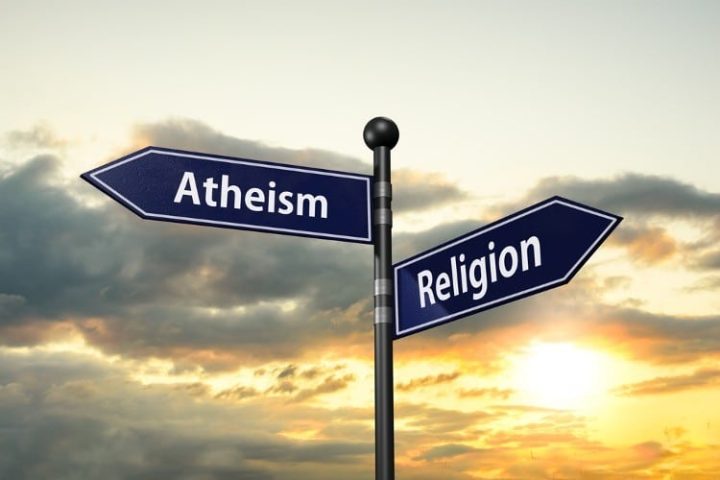
Not too many Americans want to see their land become more like China, but it is doing so in at least one particular way: The United States is secularizing — and rapidly. In fact, more than a third of Americans under 30 and 23 percent of adults overall now claim no religious affiliation. This still pales in comparison to China’s corresponding 91-percent figure, but such people constituted only about seven percent of the U.S. population in the early 1990s.
This phenomenon has serious implications. For one thing, church attendance is an excellent predictor of voting patterns, with those attending services regularly breaking Republican (being conservative) and atheists largely supporting Democrats (being liberal). The ideological aspect of this pattern is witnessed throughout the Western world, mind you. For example, Sweden, considered by many the Occident’s most “liberal” country, is also its most secular, with 73 percent of the population claiming atheist or non-religious status.
In this Sweden exemplifies Europe’s longstanding secularization, a process the United States had once resisted. But with it having finally followed suit, a British scholar has examined the phenomenon in a newly-published book.
The work is Nonverts: The Making of Ex-Christian America by Stephen Bullivant, professor of theology and the sociology of religion at St Mary’s University in Twickenham, U.K. Struck by the secularization’s rapidity, Bullivant told Religion News Service (RNS) that this “kind of religious change in a society doesn’t normally happen in the space of 20 or 30 years” — just one or two generations.
Referencing the aforementioned three- to five-fold growth (estimates vary) in the religiously unaffiliated over the last three decades, the professor points out that this is attributable mostly to people leaving their childhood faith — whom he calls “nonverts” — as opposed to those born into non-religious families (though this “trend is coming,” writes RNS). But why did this happen so fast and in the ’90s, as opposed to the ’60s?
RNS mentions “scholars” who identify a “backlash” against the Republicans’ ’90s “Contract with America” and the “religious right’s” ascendancy. Yet this seems like more of an “only have a hammer, so everything looks like a nail” explanation, propounded by individuals whose de facto religion is leftism and who instinctively think, “I never had faith, but if I did, here’s what would alienate me from it.”
But Bullivant, a man of faith — he converted to Catholicism after being raised non-religious — has different theories. First he mentions a possible Cold War factor. The battle against “godless communism” created a great stigma against embracing atheism, the logic goes, but this ended when the Iron Curtain fell.
A much more significant factor Bullivant tackles is the internet’s birth, which allowed people to interact with like-minded others and be exposed to contrary ideas and numerous subcultures. The Web has played an especially big role in seducing people away from “conservative religions,” as RNS puts it.
In fact, the first example Bullivant used in his book is The Church of Jesus Christ of Latter-day Saints because it’s a “canary in the coal mine” story. As RNS writes, if
even the Mormons are starting to bleed members, “that shows what a big issue this is for everyone else.” The erosion of Mormon attachment, he said, indicates “the breakdown of religious subcultures,” which has been especially profound in places such as Utah and southern Idaho where, in decades past, a person’s entire social and religious life could be spent around members of the LDS church.
The internet chips away at that enclave. “This was important for many of the Mormons I interviewed, who were encountering new things about Mormon history online. But even more than this, they’re starting to hang out with non-Mormons and ex-Mormons, people who are very much in your boat, and that becomes this other world you can inhabit.”
The third factor sounds like circular logic: The nones are rising because the nones are rising. But human beings are herd creatures, Bullivant explains in the book; we tend to do what our neighbors are doing. With every headline (like the one above) that heralds the seismic shift the nation is experiencing, more people become comfortable being nonreligious.
Another factor, largely unrecognized, is our age’s rampant moral relativism. As I’ve written in the past, this phenomenon “strikes at Christianity’s very heart because it renders the sacrifice on the cross incomprehensible. After all, if there’s no Truth and all is preference, there is no sin. If there’s no sin, there was no reason for Jesus to die for us. This means there is no need for salvation and, hence, no need for Christianity.”
Note: I emailed Professor Bullivant an explication of the above theory. “As it happens, the moral sea changes in US society over the past decades is also a key part of the argument in Nonverts,” he wrote in response. “So yours is a view I have a good deal of sympathy with.”
The internet factor, however, cannot be overemphasized. People are social beings, and where a small-town young person would circulate pre-Web within his locality, now he can find a smorgasbord of online communities. He thus can have a sense of belonging and fellowship with a group whose “values” are contrary to those of his area’s religious community. Of course, he’ll also make common cause with other locals similarly influenced by the internet.
The good news is that a “lie has speed, but truth has endurance.” The internet can go down, but God never will.



